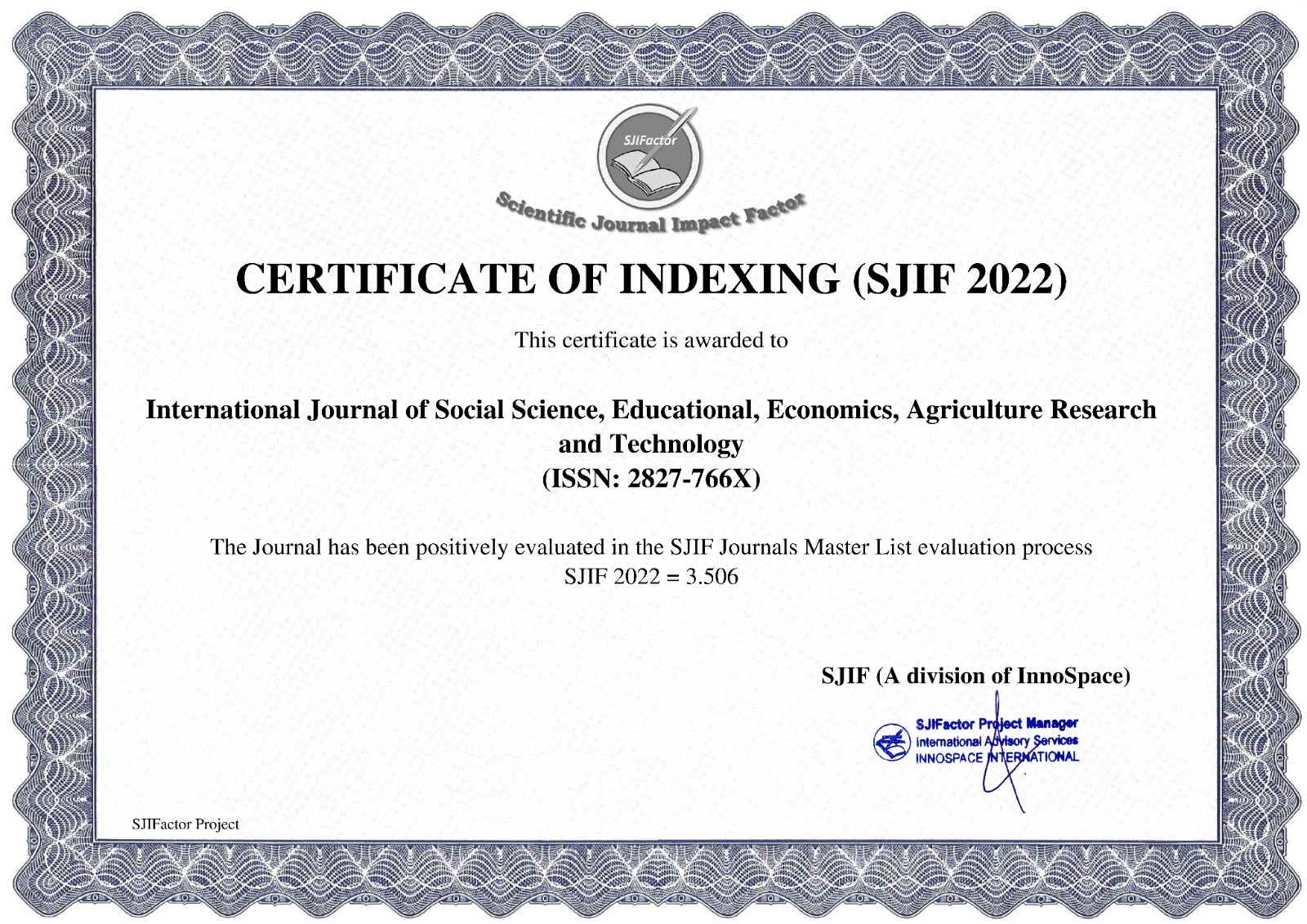INDIA’S BEAUTY AND STRENGTH LIES IN ITS UNITY IN DIVERSITY
Main Article Content
Aadil Ahmad Shairgojri
Ishfaq Ahmad Mir
There are many distinct faiths, castes, dialects, and ways of life in India. However, there is always a sense of oneness in the midst of our differences. The same spirit of togetherness that led to our freedom is essential to our nation's continued growth and well-being. We can only grow into great nations if there is peace. People of various classes, sects, and religions have coexisted peacefully in India for centuries. To make matters worse, they've been cohabiting for decades. This clearly demonstrates the Indian people's extraordinary tolerance and cohesion. The country is a fantastic example of the concept of unity in diversity. The world's oldest civilization is found in India. We have been ruled by a variety of people from different religions and cultures over the course of 5000 years. In addition, a large number of individuals immigrated to India, which welcomed them with open arms. This interaction has allowed us to see a wide range of religious, cultural, racial, and religious diversity in our country. But despite the country's many differences, the Indian people persevered through the darkest hours and dealt with every crisis with a united spirit. "Unity among difference" is the thread that links all Indians together. There are a number of different sorts of diversity in India, as well as a wide range of definitions of "diversity," which we'll cover below. In India, there are a variety of civilizations, religions, languages, and customs that may be traced from Jammu to Kanyakumari. However, India's concept of unity in variety is characterized by people coming together in love and harmony, despite their differences.
Babul, R. (2011). Understanding India’ s sociological diversity, unity in diversity and caste system in contextualizing a global conservation model. International Journal of Sociology and Anthropology, 3(12), 440-451.
Balagopalan, S. (2009). Unity in diversity’: Social cohesion and the pedagogical project of the Indian state. Thinking diversity, building cohesion: A transnational dialogue, 133-150.
Blackmore, W. H., Cotter, R. E., & Elliott, M. J. (1970). Unity in diversity. In Impact (pp. 219-230). Palgrave Macmillan, London.
Chaturvedi, S. (2003). “Indian" geopolitics: Unity in diversity or diversity of unity? Ekistics, 327-339.
Darvishpour, H. (2011). The Sign of Unity in Diversity in Indian Society (Text in Persian).
Das, P. D. CHANGING DIMENSION OF RELIGION IN INDIA: A UNITY IN DIVERSITY. PRÁVNA POLITIKA A LEGISLATÍVA LEGAL POLICY AND LEGISLATION, 210.
Dasgupta, K. (2001). Asian content development: unity in diversity. Library Review.
Gore, M. S. (1996). Unity in diversity. Social Scientist, 30-43.
Gottlob, M. (2007). India's unity in diversity as a question of historical perspective. Economic and Political Weekly, 779-789.
Heesterman, J. C. (1986). IV. Unity and Diversity in India and Indonesia. Itinerario, 10(1), 83-96.
Hulmes, E. (1992). Unity and diversity: the search for common identity. Priorities in Religious Education, 124.
Kakar, S., &Kakar, K. (2009). The Indians: Portrait of a people. Penguin Books India.
Kaufman, B. E. (Ed.). (2014). The development of human resource management across nations: Unity and diversity. Edward Elgar Publishing.
Mookerji, R. K. (2004). The fundamental unity of India. Orient Blackswan.
Nehru, J. (1937). The unity of India. Foreign Aff., 16, 231.
Nehru, J. (2008). Discovery of India. Penguin UK.
Padmanabhan, S. (2012). Unity in diversity: The Indian cosmopolitan idea. In Routledge Handbook of Cosmopolitanism Studies (pp. 476-489). Routledge.
Prasad, K. (2015). Incredible India!: Media Pluralism amidst Unity in Diversity. In Media Pluralism and Diversity (pp. 171-192). Palgrave Macmillan, London.
Ragin, C. C., & Amoroso, L. M. (2011). Constructing social research: The unity and diversity of method. Pine Forge Press.
Raj, A., & Pandey, I. Unity in Diversity–We all are one.
Ray, S., & Singh, J. K. (2015). Unity in diversity: Search for common indian national identity. IOSR Journal of Humanities and social science. Vol. 20. Issue 7. Pp 09, 16.
Roy, B. (2011). Understanding India’s sociological diversity, unity in diversity and caste system in contextualizing a global conservation model. Int. J. Sociol. Anthropol, 3, 440-451.
Schermers, H. G., &Blokker, N. M. (2011). International institutional law: unity within diversity. Brill.
Singh, M. P., & Deva, S. (2005). The constitution of India: Symbol of unity in diversity. Jahrbuch des Offentlichen Rechts der Gegenwart, Yearbook of Public Law (Germany), 53, 649-686.
Subramaniam, V. (1972). Unity and diversity in India: The strength of the Indian union. The Round Table, 62(248), 509-518.






















